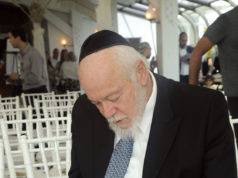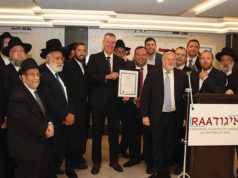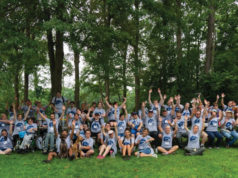
Jews lived in Spain long before the infamous Inquisition of 1492. Jews suffered tremendously under Visigoth rule. Thus, when Moslem forces invaded the peninsula in 711, Jews welcomed the forces from North Africa. The relationship between Jews and Moslems was one of complimentary interests, but not of tolerance. Jews would not submit to the religious message of Islam, but they could be trusted not to side with their prior oppressors. They were, therefore, entrusted with security functions in captured areas, allowing Moslems to advance further without leaving behind military personnel. This was typical of Spain during much of the Middle Ages; a coalescence of interests dominated the political infrastructure.
According to one opinion, there was never a medieval Spanish Golden Age of peace and tranquility amongst Jews, Moslems and Christians. Rather, there was a tense balance of economic and security interests reinforced by governmental weakness to alter the status quo.

There is no doubt that rule under the Moslems enabled Hebrew literacy to flourish, unrivaled until modern times. This was a product of the inter-mixing of Hebrew and Arabic cultures and the relative autonomy allotted to the Jewish community. It seems that this flourishing of literature was limited to the select educated elite and did not penetrate deeper into Jewish society.
In any event, as the Christian Reconquest of Spain progressed, anti-Jewish incidents multiplied at an alarming rate in the conquered areas. Jews were blamed for everything from bad crops to the Black Plague. If there is any comforting thought, it is that there were lulls in the cycle of hatred in the one hundred or so years leading up to the Inquisition. These periods, however, had a negative aspect. They duped most Jews into giving credence to the false hope that the future could only be better.
The rule of Ferdinand and Isabela is an enigma in Spanish history. For the first two decades of their rule, the king and queen were victorious in the War of Succession, and for the most part protected Jews and Jewish property. Then, in 1492, they gave authorization to the Spanish Inquisition, an unforgivable attempt to force Jews to convert to Catholicism, root out false converts, and expel all those (the majority) who would not renounce the Jewish faith.
There are several explanations to the change in royal policy. Were Ferdinand and Isabela giving in to a popular hatred of Jews and Judaism? Yes, there was such a general pervasive feeling. But this explanation has a serious flaw. Ferdinand and Isabela were autocrats in every sense of the word. They felt no need to placate or even to react to public opinion.
A careful reading of the Inquisition proclamation, in the three versions that history has handed down, provides a very different interpretation of events.
Three months before the Inquisition was announced, the Moslems retreated from Granada, their last foothold in Spain. The declaration of the Inquisition was a step toward building a new unified Spain. The prevailing philosophy in Europe was that the ruler and his religion were the key factors in defining the kingdoms that had replaced smaller medieval fiefdoms. Expulsion of the Jews was a process that had been going on for almost 200 years, and in 1492 Spain followed suit. Expelling the Jews had the dual goals of ridding the kingdom of infidels and of hastening the assimilation of Jewish converts to Catholicism by severing their contact with openly practicing Jews.
From the Royal Order of 1819, it is clear that despite the prohibition, itinerant Jewish businessmen sojourned in Spanish Morocco, Gibraltar, Andalucía and Sevilla. Then, in 1834, the Inquisition was canceled in Spain. Jews had gained equal rights in France and Prussia. Spain was added to the list of emancipation, and immediately an open Jewish presence started to take shape in Madrid.
Bushenthal, a Jewish banker born in Strasbourg, became a naturalized Spanish citizen. Daniel Weisweiller, an observant Jew from Frankfurt, established residence in Madrid (probably in 1837), and represented the Rothchild family. Madrid certainly offered opportunity, but there was still no formal Jewish community. Only in 1886 was the next step taken: Isidoro López Lapuija founded the Centro Español de Inmigración to encourage Jews to come.
History takes its own course. Lapuija’s laborious efforts were overshadowed by World War I and the large number of Central European Jewish refugees. On February 3, 1917 the Midras Abrabanel opened its door on Calle del Príncipe. Madrid finally had a synagogue! Three years later, an application was filed to establish the Comunidad Israelita de España.
Soon Spanish history took a tumultuous turn. The 1930s was a difficult time for Jews. The Monarchy was abolished in 1931, and the Second Republic was declared. Then in 1936 the country was thrust into a three-year civil war with heavy Nazi support for the triumphant Nationalists.
In May 1940, the German Army invaded the Benelux countries. Many Jews found their way through France to temporary refuge in Spain. Three years later, though, the Spanish border with France was closed under pressure from the Nazis, and the flow of refugees was cut off. Spain was never a final destination for the fleeing Jews. Most made it to Latin America, then to the United States after the war.
Again the Jewish community of Madrid fell into the doldrums. Only in the late 1960s did it come together again. On March 10, 1968 the cornerstone of the central synagogue was laid at Calle de Balmes 3.
Today, the Jewish community is weak and Jewish education is minimal, supplemented by a very active Beit Jabad (Chabad). There are five synagogues in Madrid, Beit Jabad, Beth Yaacov the central synagogue, Congregation Bet El, Jasdei Lea and Or Hayeladim.
____________________
Jay Levinson received his Ph.D. from New York University. He is now retired from the Israeli police and is an adjunct professor at John Jay College of Criminal Justice. He has authored several books.



